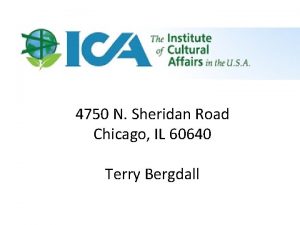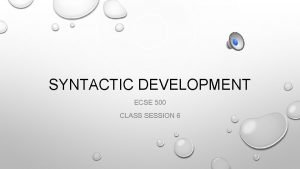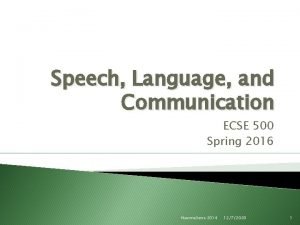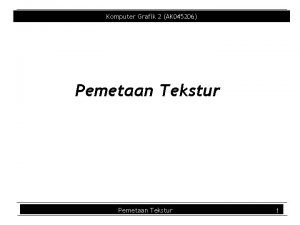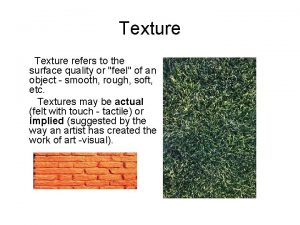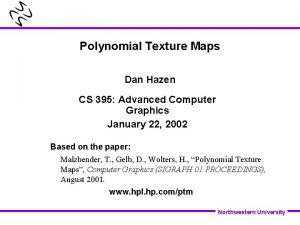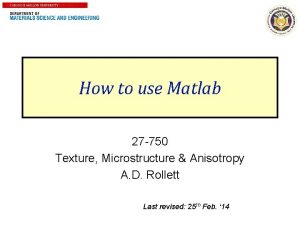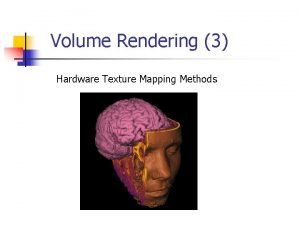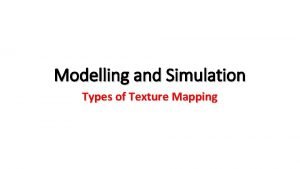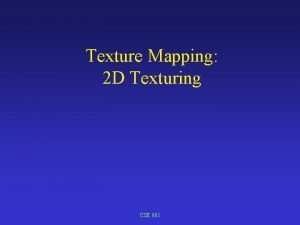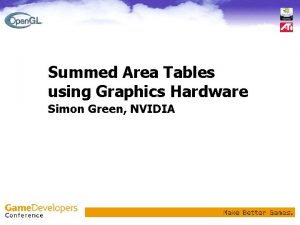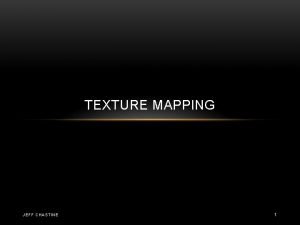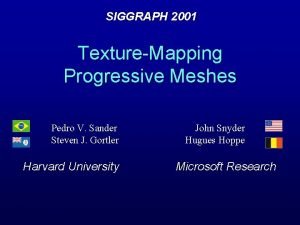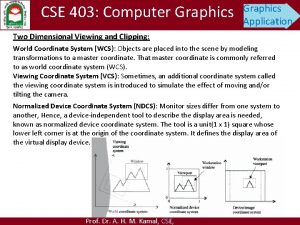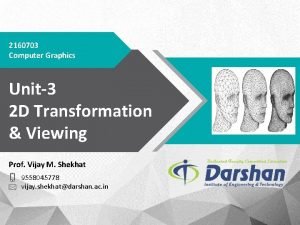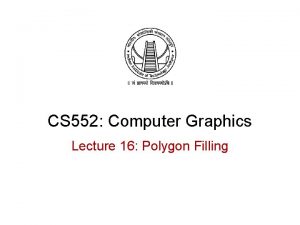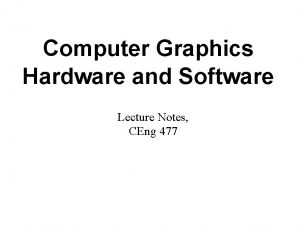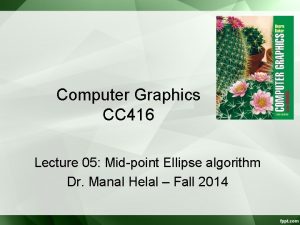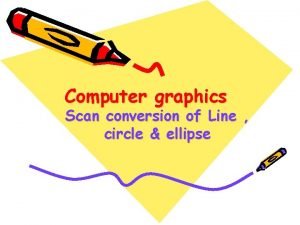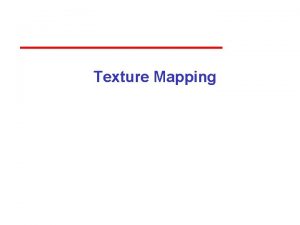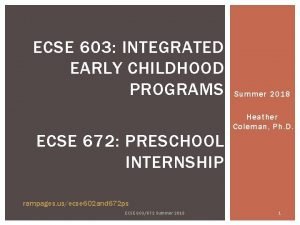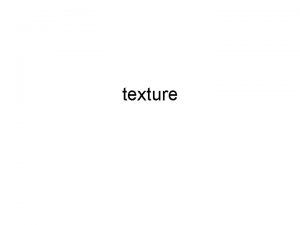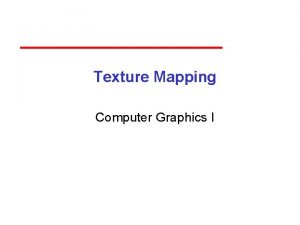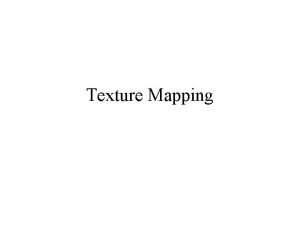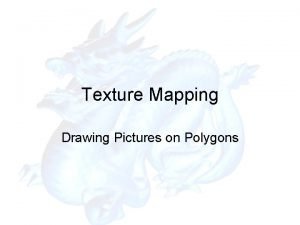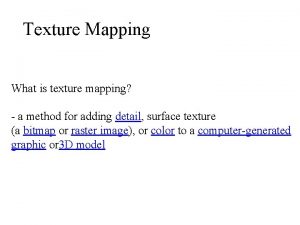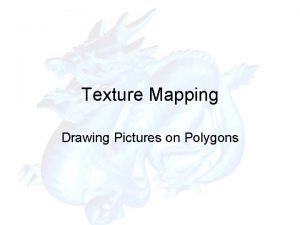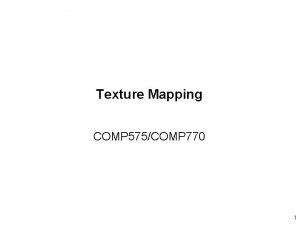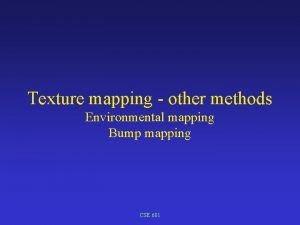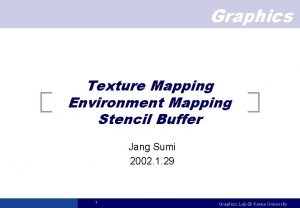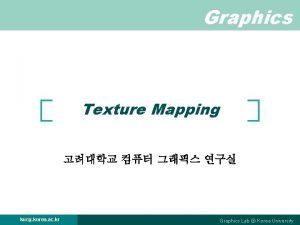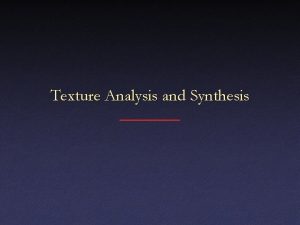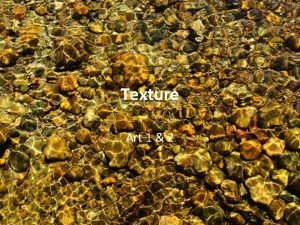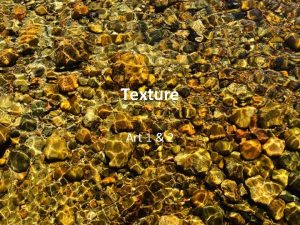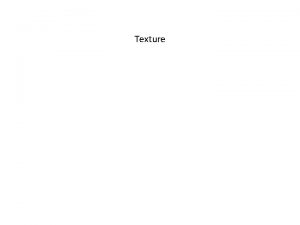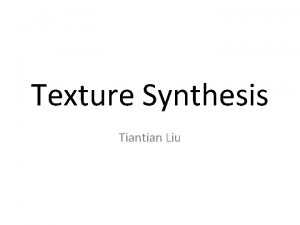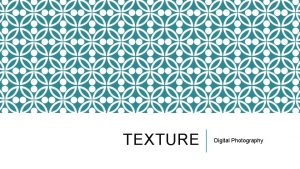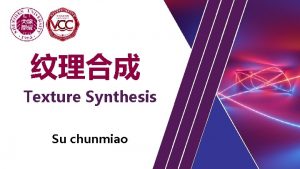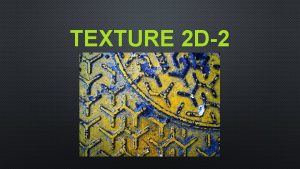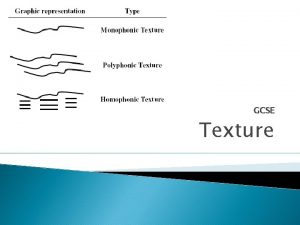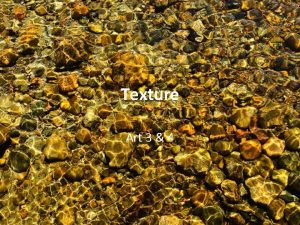Texture and Texture Mapping ECSE 4750 Computer Graphics




























- Slides: 28

Texture and Texture Mapping ECSE 4750: Computer Graphics Rensselaer Polytechnic Institute Nov 5, 2012

The Quest for Visual Realism

Another Example of Textual Mapping The left hand image is flat shaded, the right hand image has been textured.

Motivation �Adding per-pixel surface details without raising the geometric complexity of a scene. �E. g. Details can be any object or light properties etc. �Modeling and rendering time is saved by keeping the geometrical complexity low. Colors can be stored in a texture (represented as an image) and applied to a rendered scene. Scene without texture Scene with color texture

Photo - textures �Increased scene detail without increasing geometric complexity

Basic Concept �“Slap an image on a model. ” �How do we map a two-dimensional image to a surface in three dimensions? �Texture coordinates � 2 D coordinate (s, t) which maps to a location on the image (typically s and t are over [0, 1]) �Assign a texture coordinate to each vertex �Coordinates are determined by some function which maps a texture location to a vertex on the model in three dimensions

Basic Concept �Once a point on the surface of the model has been mapped to a value in the texture, change its RGB value (or something else!) accordingly �This is called parametric texture mapping �A single point in the texture is called a texel

Something else? �The first known use of texture in graphics was the modulation of surface color values, (diffuse coefficients) by Catmull in 1974. �A texture does not have to indicate color! �Bump mapping was developed in 1978 by Blinn �Transparency maps in 1985 by Gardner

What is a textural map? �Practical: “A way to slap an image on a model. ” �Better: “A mapping from any function onto a surface in three dimensions. ” �Most general: “The mapping of any image into multidimensional space. ”

Overview

Visual Overview

Notes on Hardware �Texture-mapping is supported in all modern graphics hardware since the introduction of the Voodoo 3 Dfx—it’s therefore cheap and easy. �Though the mapping is conceptualized in the order texture -> object -> screen, it is determined in reverse order in hardware, during scan conversion (“To which texel does this pixel map? ”)

What is the map shape? �"Where do I have to look in the texture map to find the color? " To answer this question, we consider two things: map shape and map entity. �For map shape, most intuitively, Planar Linear Mapping. �Do a direct mapping of a block of texture to a surface patch

Example of Planar Mapping

Other Map Shapes �Cylinder Map Shape

Other Map Shapes �Sphere Map Shape

Mapping Functions �Planar mapping �(s, t) -> (x, y) -> (xs, ys) �Cylindrical mapping �(s, t) -> (θ, h) -> (xs, ys) �Spherical mapping �(s, t) ->(latitude, longtitude) �->(xs, ys)

Mapping Functions �Use of different mapping for surface patches �Minimize distortions, avoid artifacts at seams �Several texture coordinates can be assigned to a single vertex

What about map entity? �Wood, metal, marble… is not only a picture, it is a material which can be modeled. �Regular Function + Perturbations Perturbing stripes can result in a texture with a marbled appearance.

Wood material: �From mathematical rings to eccentric, twisted tilted wood

Bump mapping: normal variation �James Blinn invented the method of perturbing the surface normal n. This changes the light interaction but not the actual size of the objects, so that bump mapped objects appear smooth at the silhouette.

Another example of bump mapping �Bump mapping affects object surfaces, making them appear rough, wrinkled, or dented. Bump mapping alters the surface normals before the shading calculation takes place.

Light Mapping

Light Mapping – Another example

Textural Mapping in Open. GL �Chapt. 12 of the textbook gives a good reference. �Let me mention several important functions:


Textural Mapping in Open. GL �More Functions

Homework on this chapter �Exercise 12. 1 �Exercise 12. 2 �Exercise 12. 3 �We will release detailed information on the course website.
 4750 n sheridan
4750 n sheridan Ecse 500
Ecse 500 Ecse 500
Ecse 500 Graphics monitors and workstations and input devices
Graphics monitors and workstations and input devices What is texture in computer graphics
What is texture in computer graphics Introduction to computer graphics - ppt
Introduction to computer graphics - ppt Implied or simulated texture has tactile feel
Implied or simulated texture has tactile feel Northwestern university
Northwestern university Matlab texture mapping
Matlab texture mapping Texture mapping algorithm
Texture mapping algorithm Texture mapping types
Texture mapping types 2d texture mapping
2d texture mapping Summed-area tables for texture mapping
Summed-area tables for texture mapping Jeff chastine
Jeff chastine Texture mapping progressive meshes
Texture mapping progressive meshes The associative mapping is costlier than direct mapping.
The associative mapping is costlier than direct mapping. Forward mapping vs backward mapping
Forward mapping vs backward mapping Terjemahan
Terjemahan In two dimensional viewing we have?
In two dimensional viewing we have? Midpoint line drawing algorithm in computer graphics
Midpoint line drawing algorithm in computer graphics Pixel addressing in computer graphics
Pixel addressing in computer graphics In two dimensional viewing system have
In two dimensional viewing system have Reflection and shearing in computer graphics
Reflection and shearing in computer graphics Mathematical foundations of computer graphics and vision
Mathematical foundations of computer graphics and vision Points and lines in computer graphics ppt
Points and lines in computer graphics ppt Region filling and clipping in computer graphics
Region filling and clipping in computer graphics Computer graphics hardware and software
Computer graphics hardware and software Ellipse parameters in computer graphics
Ellipse parameters in computer graphics Scan conversion of ellipse in computer graphics
Scan conversion of ellipse in computer graphics
